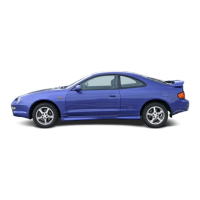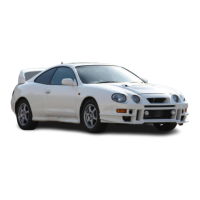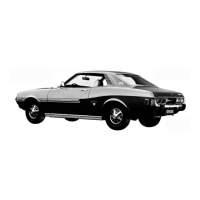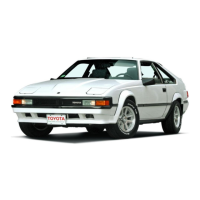Do you have a question about the Toyota Celica 1999 and is the answer not in the manual?
Detailed layout and identification of components on the vehicle's dashboard.
Explanation of the gauges, indicators, and readouts on the instrument cluster.
Identifies and explains various warning lights and indicator symbols on the dashboard.
Guidelines for proper seating posture and safety precautions while driving.
Information on proper seat belt usage, precautions, and maintenance.
Explanation of the Supplemental Restraint System (SRS) airbags and their function.
Explains the fuel gauge and low fuel level warning light.
Information on the engine coolant temperature gauge and engine overheating.
Operation of the ignition switch and steering lock mechanism.
How to operate the automatic transmission, including shift lock and overdrive.
Explanation of the manual transmission shift pattern and recommended speeds.
Step-by-step instructions for starting the engine.
Troubleshooting steps for when the vehicle fails to start.
What to do if the engine stalls while the vehicle is in motion.
Steps to take if the vehicle's engine overheats.
Instructions for changing a flat tire safely.
Guidance on how to properly tow the vehicle if necessary.
How to check and maintain the correct engine oil level.
Precautions and procedures for checking the vehicle's battery condition.
How to check and maintain the engine coolant level and type.
Safety measures to follow when recharging the vehicle battery.
Essential safety precautions and guidelines for performing DIY maintenance.
How to check the brake fluid level and fluid type.
How to check for blown fuses and replace them correctly.
How to check the power steering fluid level and fluid type.
Importance and procedure for checking tire pressure regularly.
How to check tire tread wear and replace tires.
Benefits and procedure for rotating tires to equalize wear.
Engine specifications including model, type, bore, stroke, and displacement.
Fuel type, octane rating, and fuel tank capacity details.
Key service specifications like valve clearance, spark plugs, and drive belt tensions.
Detailed layout and identification of components on the vehicle's dashboard.
Explanation of the gauges, indicators, and readouts on the instrument cluster.
Identifies and explains various warning lights and indicator symbols on the dashboard.
Guidelines for proper seating posture and safety precautions while driving.
Information on proper seat belt usage, precautions, and maintenance.
Explanation of the Supplemental Restraint System (SRS) airbags and their function.
Explains the fuel gauge and low fuel level warning light.
Information on the engine coolant temperature gauge and engine overheating.
Operation of the ignition switch and steering lock mechanism.
How to operate the automatic transmission, including shift lock and overdrive.
Explanation of the manual transmission shift pattern and recommended speeds.
Step-by-step instructions for starting the engine.
Troubleshooting steps for when the vehicle fails to start.
What to do if the engine stalls while the vehicle is in motion.
Steps to take if the vehicle's engine overheats.
Instructions for changing a flat tire safely.
Guidance on how to properly tow the vehicle if necessary.
How to check and maintain the correct engine oil level.
Precautions and procedures for checking the vehicle's battery condition.
How to check and maintain the engine coolant level and type.
Safety measures to follow when recharging the vehicle battery.
Essential safety precautions and guidelines for performing DIY maintenance.
How to check the brake fluid level and fluid type.
How to check for blown fuses and replace them correctly.
How to check the power steering fluid level and fluid type.
Importance and procedure for checking tire pressure regularly.
How to check tire tread wear and replace tires.
Benefits and procedure for rotating tires to equalize wear.
Engine specifications including model, type, bore, stroke, and displacement.
Fuel type, octane rating, and fuel tank capacity details.
Key service specifications like valve clearance, spark plugs, and drive belt tensions.
| Brand | Toyota |
|---|---|
| Model | Celica 1999 |
| Category | Automobile |
| Language | English |











